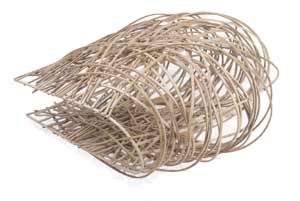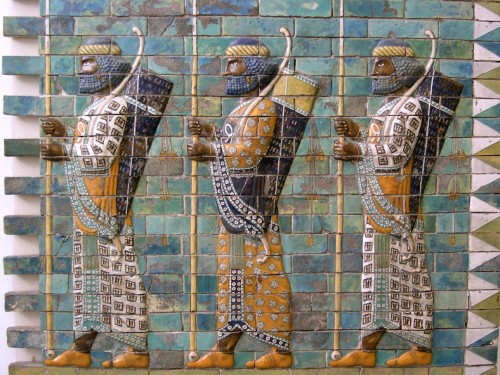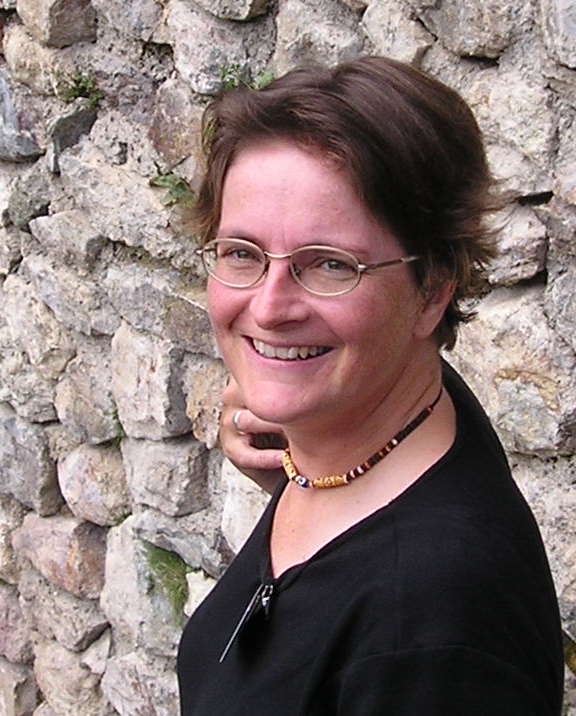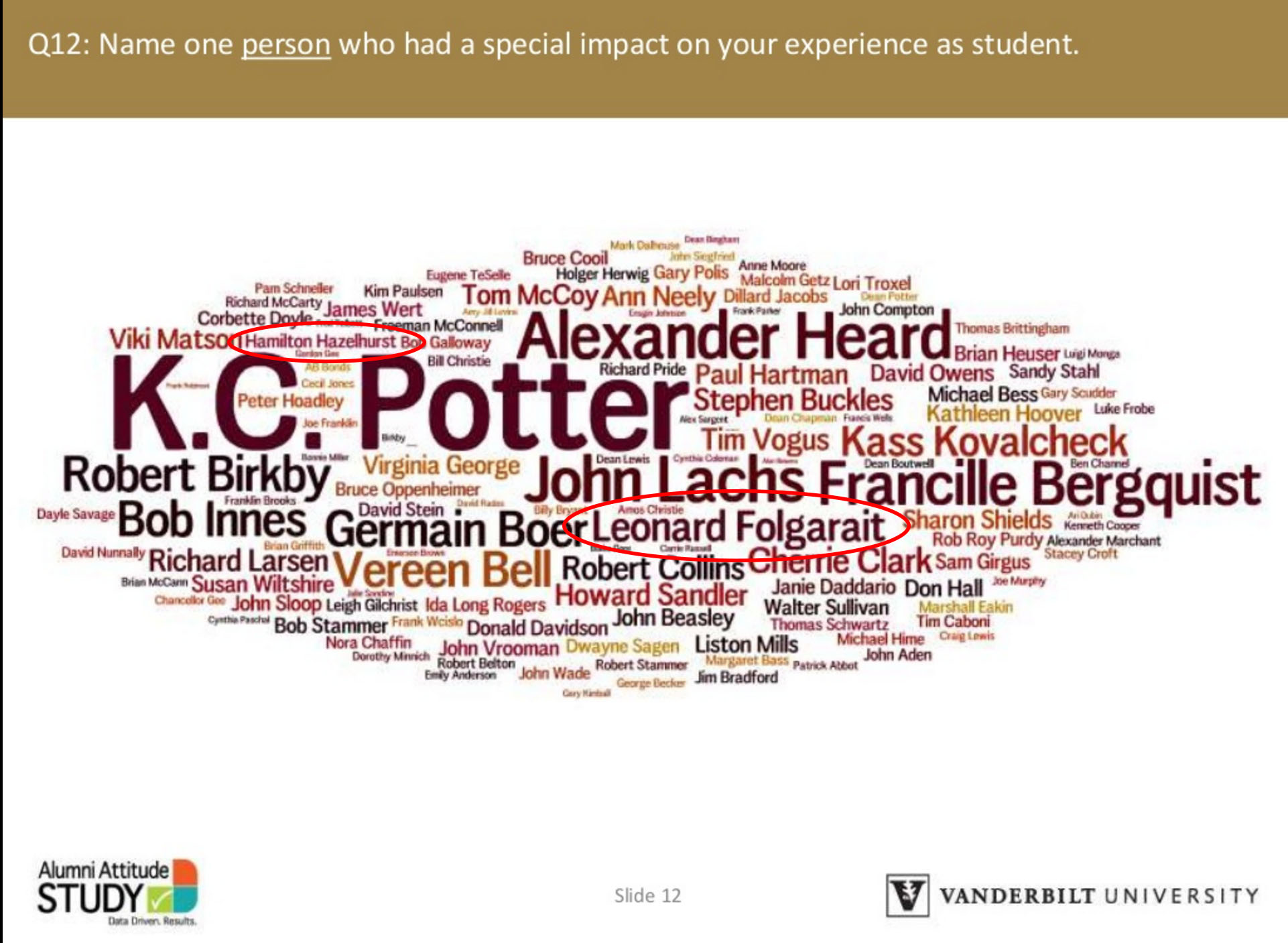Ulla Haselstein to Lecture March 17 on Gertrude Stein’s Portrait of Cézanne
 Ulla Haselstein, professor and chair of American Literature at the John F. Kennedy-Institut für Nordamerikastudien, Freie Universität, Berlin, will address “Gertude Stein’s Portrait of Cézanne” in a lecture on Thursday, March 17, at 4:10 pm in Buttrick Hall 305 on Vanderbilt’s main campus. A recipient of a two-year “opus magnum” grant from the VW Foundation, Haselstein is currently writing a book entitled Gertrude Stein’s Literary Portraiture.
Ulla Haselstein, professor and chair of American Literature at the John F. Kennedy-Institut für Nordamerikastudien, Freie Universität, Berlin, will address “Gertude Stein’s Portrait of Cézanne” in a lecture on Thursday, March 17, at 4:10 pm in Buttrick Hall 305 on Vanderbilt’s main campus. A recipient of a two-year “opus magnum” grant from the VW Foundation, Haselstein is currently writing a book entitled Gertrude Stein’s Literary Portraiture.
The author of monographs on psychoanalytic literary theory and on the concept of the gift exchange respectively (both in German), Hasselstein has co-edited scholarly volumes published in English, including Iconographies of Power: The Politics and Poetics of Visual Representation (2003), Cultural Transactions: 50 Years of American Studies in Germany (2005), Aesthetic Transgressions (2006), The Power of the Aesthetic in American Culture (2007), The Pathos of Authenticity: American Literary Imaginations of the Real (2010), and The Cultural Career of Coolness (2013). She is also the editor of a DFG research symposium on allegory with contributions from literary studies and art history (forthcoming in May 2016).
Haselstein’s lecture is sponsored by Max Kade Center for European and German Studies, Robert Penn Warren Center for the Humanities, Program in American Studies, Department of English, Department of French and Italian, and Department of History of Art. For more information, call Julia Kamasz, Department of History of Art, at 615.322.2831.
Posted by vrcvanderbilt on March 14, 2016 in HART, Lectures, VRC
Christopher Johns Presents Paper on Chinoiserie and Chairs Session at SEASECS Meeting
Christopher Johns, Norman L. and Roselea J. Goldberg Professor of History of Art, presented a paper and chaired a session at the annual meeting of the Southeastern American Society for Eighteenth-Century Studies held February 25-27 in Savannah, Georgia. His paper on chinoiserie addressed “The Color Yellow: Qing Imperial Chromatics and the Origins of Western Ideas of Eastern Difference.”
The session he chaired was entitled “Art and Women and International Cultural Exchange.” The overall theme of the meeting was “East and West: The Broad Expanse of the Eighteenth Century.”
The Southeastern American Society for Eighteenth-Century Studies is an interdisciplinary society promoting the interchange of ideas and information on the culture, history, literature, philosophy, politics, music, economics, architecture, art, medicine, and science of the eighteenth-century world.
Posted by vrcvanderbilt on March 12, 2016 in HART, Lectures, VRC
HART Department Awards Five Downing Grants for the Spring Semester
The History of Art Department recently announced the recipients of the 2016 Downing Grants for the spring semester, whose research sites range from Johannesburg, South Africa, to New York City to Houston, Texas. The recipients are Haley Brown, Anna Greene, Hannah Ladendorf, Monica Peacock, and Sujin Shin. The Downing Grant is a competitive award made in the fall and spring to juniors and seniors whose research in history of art courses would benefit from travel to museums, galleries, and other sites.
The Downing grant will support Haley Brown’s research this summer in Johannesburg for her honors thesis, “Photographic Portraiture in Apartheid and Post-Apartheid South Africa.” Her advisor is Rebecca van Diver, assistant professor of history of art.
Anna Greene plans to consult correspondence between such artists as René Magritte and Salvador Dalí and New York’s Museum of Modern Art in the museum’s exhibition archives. Her honors thesis is on Surrealism and advertising, and her advisor is Leonard Folgarait, professor of history of art.
Folgarait is also advising Hannah Ladendorf who is participating in the theatrical work, “Sleep No More,” a Surrealist interpretation of Shakespeare’s Macbeth, to be performed in the McKittrick Hotel in New York City. Her honors thesis will address Surrealism and modern-day theater.
 Monica Peacock will travel to museums and meet with experts in Chicago, Boston, New York City, Philadelphia, and Washington, DC, for her research on ISIS and their destruction of culturally and historically significant sites in Iraq and Syria—the focus of her honors thesis. Her advisor is Mireille Lee, assistant professor of history of art.
Monica Peacock will travel to museums and meet with experts in Chicago, Boston, New York City, Philadelphia, and Washington, DC, for her research on ISIS and their destruction of culturally and historically significant sites in Iraq and Syria—the focus of her honors thesis. Her advisor is Mireille Lee, assistant professor of history of art.
Sujin Shin is writing her honors thesis on Mark Rothko’s nondenominational chapel in Houston, Texas, and what Robert Rosenblum called the “abstract sublime.” She will travel to Houston to study the Rothko Chapel, and her advisor is Vivien Fryd, professor of history of art.
The Department of History of Art awards grants for travel to exhibitions and research centers to supplement academic instruction for students in the History of Art department at Vanderbilt in the Honors Program, in senior seminars (HART 4960), or in “W” (writing) courses. These Downing Grants, which provide assistance for up to $1,500 in travel costs, are awarded in the fall and spring of each academic year.
Past Downing Grants have supported research on projects ranging from an 18th-century “folly” in Ireland, to a Marcel Duchamp installation in the Philadelphia Museum of Art, to the Elgin marbles from the Parthenon in the British Museum, to a Gothic reliquary in the Louvre.
*Monumental arch in the eastern section of Palmyra’s colonnade
Posted by vrcvanderbilt on March 2, 2016 in HART, Student/Alumni, VRC
Kevin Murphy Receives Craft Research Fund Grant from Center for Craft, Creativity & Design
 The Center for Craft, Creativity & Design (CCCD) has awarded one of eleven Craft Research Fund grants for 2015-2016 to Kevin Murphy, Andrew W. Mellon Chair in the Humanities and Professor and Chair of History of Art. The $6,500 project grant will provide support for Murphy’s research on Scott Nearing (1883-1893) and Helen K. Nearing (1904-1995) and the back-to-land movement of the 1960s and 1970s.
The Center for Craft, Creativity & Design (CCCD) has awarded one of eleven Craft Research Fund grants for 2015-2016 to Kevin Murphy, Andrew W. Mellon Chair in the Humanities and Professor and Chair of History of Art. The $6,500 project grant will provide support for Murphy’s research on Scott Nearing (1883-1893) and Helen K. Nearing (1904-1995) and the back-to-land movement of the 1960s and 1970s.
The goals of this peer-reviewed grant are to support innovative research on critical issues in craft theory and history; to explore the interrelationships among craft, art, design and contemporary culture; to foster new cross-disciplinary approaches to scholarship in the craft field; and to advance investigation of neglected questions on craft history and criticism in the United States.
“These researchers are laying an important and solid foundation for the study and interpretation of craft in this country by publishing books, articles, and exhibition catalogues produced in part by the Craft Research Fund,” said Stephanie Moore, executive director of CCCD. “Our mission is to advance the understanding of craft by encouraging and supporting research, critical dialogue, and professional development.
*Structural Study (courtesy of the Center for Craft, Creativity & Design)
Posted by vrcvanderbilt on March 2, 2016 in HART, VRC
Elspeth Dusinberre to Present AIA Lecture on March 1 on the Ancient Persian Empire
 Elspeth Dusinberre, chair and professor of classics at the University of Colorado-Boulder, will lecture on “Power and the Ideal in the Ancient Persian Empire” at the Nashville Parthenon on Tuesday, March 1, at 6 pm. Her lecture will explore the glories and practices, the rhetoric and realities, of the ancient Persian Empire.
Elspeth Dusinberre, chair and professor of classics at the University of Colorado-Boulder, will lecture on “Power and the Ideal in the Ancient Persian Empire” at the Nashville Parthenon on Tuesday, March 1, at 6 pm. Her lecture will explore the glories and practices, the rhetoric and realities, of the ancient Persian Empire.
When Alexander the Great conquered the Persian Empire in 330 BCE, he encountered a huge and varied administrative system that was focused on the figure of the King. The power and wealth of Persia were legendary, and with good reason: the Persian Empire, which lasted for more than two centuries (ca. 550-330 BCE), was the largest and most powerful sociopolitical entity the world had ever seen. It affected the ways people ate and drank and how they dealt with their dead, their own self-expression, and their worship.
Dusinberre (PhD, Michigan 1997) is interested in cultural interactions in Anatolia, particularly the ways in which the Achaemenid Persian Empire (ca. 550-330 BCE) affected local social structures and in the give-and-take between Achaemenid and other cultures. The Archaeological Institute of America presented the 2015 James R. Wiseman Book Award to Dusinberre for Empire, Authority, and Autonomy in Achaemenid Anatolia (Cambridge and New York 2013), which considers all of Anatolia under Persian rule and proposes a new model for understanding imperialism.
She is currently studying the seal impressions on the Aramaic tablets of the Persepolis Fortification Archive (dating ca. 500 BCE), and the cremation burials from Gordion, in addition to other projects at Gordion and Sardis. She has worked at Sardis, Gordion, and Kerkenes Dağ in Turkey, as well as at sites elsewhere in the eastern Mediterranean.
Dusinberre teaches primarily Greek and Near Eastern archaeology at the University of Colorado-Boulder. She is a President’s Teaching Scholar and has received twelve University of Colorado teaching awards.
Free and open to the public, her lecture is sponsored by the Nashville Society of the Archaeological Institute of America, the Conservancy for the Parthenon and Centennial Park, and Vanderbilt’s Department of Classical Studies. Those who plan to attend the AIA lecture on March 1 are encouraged to call the Nashville Parthenon at 615.862.8431 to reserve a seat.
Persian Archers, glazed brick from the Palace of Darius I at Susa, ca. 500 BCE, Pergamon Museum, Berlin, Germany
Posted by vrcvanderbilt on February 24, 2016 in HART, Lectures, VRC
Pakistani Artist Mahwish Chishty Featured in Studio VU Lecture on February 10
 Initially trained as a miniature painter from the National College of Arts, Lahore, Pakistan, Mahwish Chishty has aggressively combined new media and conceptual work with her traditional practice, emerging as a notable conceptual artist. As part of the Department of Art’s Studio VU Lecture Series, Chishty will talk about her work on Wednesday, February 10, at 7 pm in room 220 of the E. Bronson Ingram Studio Arts Center.
Initially trained as a miniature painter from the National College of Arts, Lahore, Pakistan, Mahwish Chishty has aggressively combined new media and conceptual work with her traditional practice, emerging as a notable conceptual artist. As part of the Department of Art’s Studio VU Lecture Series, Chishty will talk about her work on Wednesday, February 10, at 7 pm in room 220 of the E. Bronson Ingram Studio Arts Center.
In addition to her lecture, a unique collaborative exhibition, This Is Our War, with Chishty and 200 Maplewood High School students, opens on Saturday, February 13, at the Red Arrow Gallery, 919 Gallatin Avenue #4, in East Nashville, with a reception from 6-9 pm. On view through March 6, the exhibit focuses on the impact of drones and drone imagery.
Hovering over the clouds above the Pakistan-Afghanistan border, unmanned aerial vehicles are there to target the terrorists. The Pakistani painter reimagines drones as folk art in her country’s colorful “truck art” tradition. Chishty presents her series of hauntingly beautiful paintings using silhouettes of drones juxtaposed with vibrant folk art imagery, combining politics and cultures that have shaped her experience. By camouflaging modern war machines with folk imagery, she is shedding light on the complexity of acculturation, politics and power along with enhancing the dialogue.
Chishty has exhibited her work nationally and internationally at such venues as the University of Technology Gallery, Sydney, Australia; Boghossian Foundation– Villa Empain, Brussels; Utah Museum of Contemporary Art, Salt Lake City; Museum of Contemporary African Diasporan Arts, Brooklyn, NY; Washington Project for the Arts, Washington, DC; The Contemporary Austin (AMOA-Arthouse), Austin, TX, and Fukuoka Shi Asian Art Museum, Japan, University of Michigan, Ann Arbor, MI, and Gandhara Art Gallery, Karachi, Pakistan, among others.
The artist holds an MFA degree in Studio Arts from the University of Maryland, College Park. In 2015 she was awarded residencies at the Chicago Cultural Center, Chicago, IL; Yaddo, Saratoga Springs, NY; and Vermont Studio Center, Vermont, NY. Her paintings are in public and private collections, including the Foreign Office Islamabad, Pakistan and Fukuoka Asian Art Museum, Fukuoka Shi, Japan.
Her lecture is free and open to the public. The Ingram Studio Arts Center is located at 25th Avenue South and Garland Avenue on the Vanderbilt campus. On street parking is available along Garland Avenue and in the nearby parking lots.
For more information, please contact the Department of Art at 615-343-7241 or martha.l.dale@vanderbit.edu.
*MQ-9 Guardian, gouache and tea stain on handmade paper, 2011
Posted by vrcvanderbilt on February 10, 2016 in Events, HART, Lectures, VRC
Christopher Johns Edits Volume on the Papacy of Pope Benedict XIV Lambertini
 Emerging from a groundbreaking international conference on the papacy of Pope Benedict XIV Lambertini (reigned 1740-1758) and its legacy, the anthology Benedict XIV and the Enlightenment: Art, Science, and Spirituality, edited by Rebecca Messbarger, Christopher M. S. Johns and Philip Gavitt, was recently published by the University of Toronto Press. The symposium of 2012 was hosted by Washington University in Saint Louis, Saint Louis University, and the Missouri State History Museum and included scholars from Italy, Germany, the United Kingdom and the United States.
Emerging from a groundbreaking international conference on the papacy of Pope Benedict XIV Lambertini (reigned 1740-1758) and its legacy, the anthology Benedict XIV and the Enlightenment: Art, Science, and Spirituality, edited by Rebecca Messbarger, Christopher M. S. Johns and Philip Gavitt, was recently published by the University of Toronto Press. The symposium of 2012 was hosted by Washington University in Saint Louis, Saint Louis University, and the Missouri State History Museum and included scholars from Italy, Germany, the United Kingdom and the United States.
Benedict XIV and the Enlightenment offers a broad and nuanced assessment of Benedict’s engagement with Enlightenment art, science, spirituality, and culture. Revised versions of eighteen of the contributions form the body of the anthology. Issues as far-ranging as canonization procedures in the context of European Enlightenment, anatomy, art, architecture, and archaeology in the context of papal cultural policies, the Church’s relation to modern science, and the reform of conventual practices are examined.
Johns, the Norman L. and Roselea J. Goldberg Professor of History of Art, one of the volume’s editors, has contributed two essays: “Introduction: Benedict XIV and Catholic Enlightenment” and “The Papacy and Coffee Culture: Benedict XIV’s Coffee House in the Quirinal Gardens.”
Pope Benedict XIV Lambertini (r. 1740–58) was one of the driving forces behind the Italian Enlightenment of the eighteenth century. His campaign to reconcile faith and empirical science re-launched a dialogue between the Church and the European intellectual community, and expanded papal patronage of the arts and sciences, helping restore Italy’s position as a center of intellectual and artistic innovation in the broader European context..
*The book cover features the portrait of Pope Benedict XIV Lambertini by Pierre Subleyras (French, 1699-1749), oil on canvas, 1746. Courtesy Metropolitan Museum of Art, New York.
Posted by vrcvanderbilt on February 9, 2016 in HART, VRC
HART Professors Present Papers at CAA Annual Conference February 3-6
Professors Mireille Lee, Barbara Tsakirgis, and Riyaz Latif travel to Washington, DC this week to present papers at the College Art Association annual conference held February 3-6. The conference consists of four days of presentations, panel discussions, workshops, special events, and exhibitions exploring the study, practice, and history of art and visual culture.
 Lee, Assistant Professor of History of Art and Classical Studies, will address “Mirrors as Instruments of Sexual and Social Transformation” at a session entitled “The Ancient Art of Transformation.” Although we generally think of mirrors as tools for the transformation of personal appearance, ancient Greek mirrors were essential for female sexual maturation and social status. Absent from the iconography of young girls in sculpture and vase painting, mirrors are common on wedding vases in scenes of the preparations of the bride. Lee suggests that bridal scenes “in which the bride gazes into a mirror but does not groom herself should be read as revelatory events in which the bride has a vision of her future husband.”
Lee, Assistant Professor of History of Art and Classical Studies, will address “Mirrors as Instruments of Sexual and Social Transformation” at a session entitled “The Ancient Art of Transformation.” Although we generally think of mirrors as tools for the transformation of personal appearance, ancient Greek mirrors were essential for female sexual maturation and social status. Absent from the iconography of young girls in sculpture and vase painting, mirrors are common on wedding vases in scenes of the preparations of the bride. Lee suggests that bridal scenes “in which the bride gazes into a mirror but does not groom herself should be read as revelatory events in which the bride has a vision of her future husband.”
Bronze votive mirrors have been recovered from several Greek sanctuaries, most notably the Argive Heraion and the sanctuary of Artemis at Brauron. “While we do not know the motivations for these dedications, the fact that mirrors are offered to goddesses associated with rituals of maturation, marriage, childbirth, and death suggests that mirrors likewise marked critical moments in the female life cycle,” said Lee.
The classical Greek oikos was vulnerable to major threats facing the family—disease, burglary, and sexual violence, noted Tsakirgis, Associate Professor of Classical Studies and History of Art, and a participant in the session on “Space and the Sacred in the Ancient Mediterranean and Near East.” The Greeks enhanced the physical security of the family and household with protection by deities, especially Hermes, Hekate, and Herakles. Her paper, “Hermes, Hekate, Herakles: Defining and Defending the Oikos in the Greek World,” examines material from across the Greek world for the guardians of domestic boundaries, with a focus on Athens, from which we have archaeological and textual evidence.
“The definition and defense of the oikos were achieved through visual (sculpture), oral (prayer), smelled (incense), tasted (food offerings), and felt means,” wrote Tsakirgis. “The presence of the gods thus transformed the house into a sanctuary.”
 Djama’ al-Fna, the renowned public square in Marrakesh, invites us to explore its layered spatial expression and continually configuring diverse assemblies that ebb and flow over the course of each day, noted Latif, Mellon Assistant Professor of History of Art. He will present his paper, entitled “Crowds and the Carnival: The Changing Faces of Djama’ al-Fna,” at the session on “The Art of Assembly: Urban Space and Crowd Control in the Middle Ages.”
Djama’ al-Fna, the renowned public square in Marrakesh, invites us to explore its layered spatial expression and continually configuring diverse assemblies that ebb and flow over the course of each day, noted Latif, Mellon Assistant Professor of History of Art. He will present his paper, entitled “Crowds and the Carnival: The Changing Faces of Djama’ al-Fna,” at the session on “The Art of Assembly: Urban Space and Crowd Control in the Middle Ages.”
Latif reflects upon “the myriad morphologies and motions of open/closed crowds that Djama’ al-Fna recurrently structures within its locus.” At present its contours are orchestrated by acts of “cultural entertainment” that Latif describes as “carnivalesque.” Thus it seems appropriate “to position Djama’ al-Fna in the conjectural domain of state-sponsored projections of history and culture, negotiating some elements of the state’s identity behind the mask of revelries.” Consequently Latif reflects upon the “networks in urban space that are inadvertently drawn into performing the festive motions of culture, serving as a sheen over the less than exemplary social, political and economic realities.”
Posted by vrcvanderbilt on February 3, 2016 in Events, HART, Lectures, VRC
HART Professors Leonard Folgarait, Hamilton Hazlehurst Cited in Alumni Survey
Posted by vrcvanderbilt on January 28, 2016 in HART, Student/Alumni, VRC
Betsey Robinson Named to 2016 Class of Chancellor Faculty Fellows
 Betsey Robinson, associate professor, departments of history of art and classical studies, is among fourteen outstanding faculty members from across the university recently named to the 2016 class of Chancellor Faculty Fellows. The class comprises highly accomplished, recently tenured faculty from the humanities, social sciences, life and physical sciences, and clinical sciences, as well as business, education and engineering.
Betsey Robinson, associate professor, departments of history of art and classical studies, is among fourteen outstanding faculty members from across the university recently named to the 2016 class of Chancellor Faculty Fellows. The class comprises highly accomplished, recently tenured faculty from the humanities, social sciences, life and physical sciences, and clinical sciences, as well as business, education and engineering.
Robinson will hold the title of Chancellor Faculty Fellow for two years and will be supported by an unrestricted allocation of $40,000 a year for two fiscal years beginning July 1. The funds can be used to support innovative research, scholarship and creative expression activities that will further propel the career of the awardee. The Chancellor Faculty Fellows will also meet as a group during the course of their awards to exchange ideas on teaching and research, building a broader intellectual community that advances trans-institutional scholarship.
“This class of fellows represents the remarkable breadth and depth of talent we have in our newly tenured faculty,” said Chancellor Nicholas Zeppos. “Our investment in these faculty at this critical time in their careers not only supports their growth as scholars, educators and mentors, but also supports the university’s continued growth and success in fostering interdisciplinary research and collaboration. These extraordinary faculty members exemplify our academic mission, and our investment in them is an investment in Vanderbilt’s future.”
Robinson (Harvard University, A.B., A.L.M.; University of Pennsylvania, Ph.D.) teaches courses in the art, architecture, and archaeology of the ancient Mediterranean world. Her primary interests include Greek and Roman architecture and art, ancient cities and sanctuaries, and landscapes—actual, imagined and as represented in ancient art and literature.
 Since 1997 she has conducted research at the Corinth Excavations of the American School of Classical Studies at Athens, focusing on water supply, architecture, and works of art in context. Her book, Histories of Peirene: A Corinthian Fountain in Three Millennia (Princeton: ASCSA 2011), won the 2011 PROSE Prize for Archaeology and Anthropology. Her current project, “Divine Prospects: Mounts Helicon and Parnassus in Ancient Experience and Imagination,” is a book-length manuscript on Hellenistic and Roman perceptions of, and engagement within, Greek landscapes and sanctuaries.
Since 1997 she has conducted research at the Corinth Excavations of the American School of Classical Studies at Athens, focusing on water supply, architecture, and works of art in context. Her book, Histories of Peirene: A Corinthian Fountain in Three Millennia (Princeton: ASCSA 2011), won the 2011 PROSE Prize for Archaeology and Anthropology. Her current project, “Divine Prospects: Mounts Helicon and Parnassus in Ancient Experience and Imagination,” is a book-length manuscript on Hellenistic and Roman perceptions of, and engagement within, Greek landscapes and sanctuaries.
Ongoing research considers Roman-era mosaics in Corinth, and the history of archaeological excavation in the 19th and early 20th centuries. Her career began with deep-sea exploration in the Mediterranean and work in paleontology and history of science; more recently, she has excavated ancient through modern contexts in Greece, Israel, and Italy.
Posted by vrcvanderbilt on January 25, 2016 in HART, VRC


©2025 Vanderbilt University ·
Site Development: University Web Communications